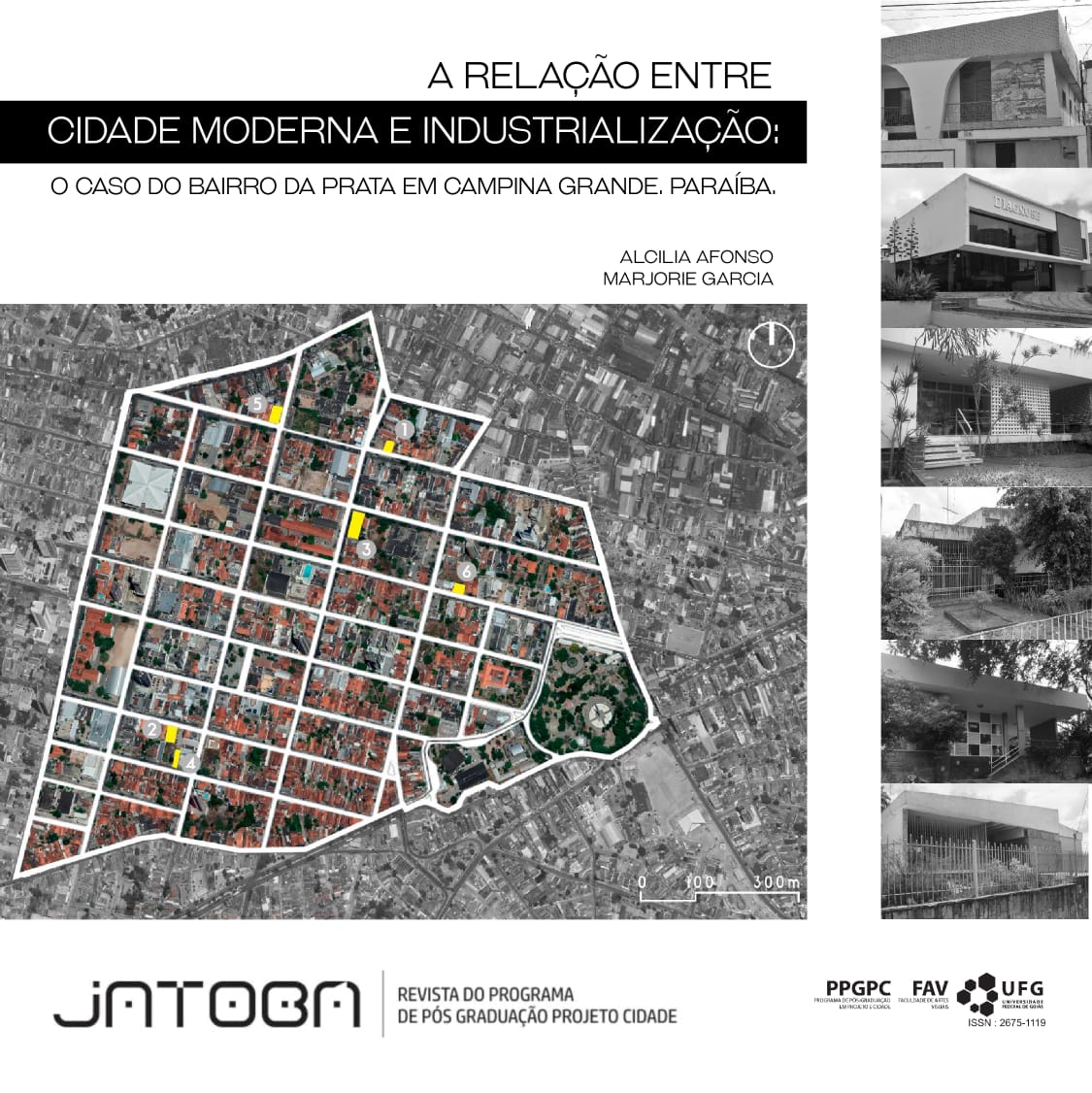The relationship between the modern city and industrialization
the case of the “Prata” district in Campina Grande. Paraíba.
DOI:
https://doi.org/10.54686/revjat.v1i.61787Keywords:
Industrial heritage. modern architectural heritage. city.Abstract
The present work has as object of reflection the relationship between modern city and industrialization, using as a case study,the Prata neighborhood in Campina Grande, second largest city of Paraíba State. The objective is to observe how this relationship
occurred between the city that aimed for modernity and economic development resulting from the implementation of a policy proposed
by SUDENE / Northeast Development Superintendence in the late 1950s and throughout the 1960s, which integrated into a municipal and
state agenda, it made the city strengthen its industrial trend and change its urban landscape, with the creation of new neighborhoods,
such as the Industrial District, and the consolidation of a new residential area - the Prata district. - which adopted architectural modernity in its design and constructive vocabulary, as will be seen throughout the article. It is justified by the need to dialogue the industrial heritage with the modern heritage, noting that this relationship resulted in the production of a collection of real estate / architectural and urbanistic properties that transformed the city into the worked cut, and left as a consequence a rich collection. , but they are at serious risk today because they are not properly protected. The adopted research methodology works in two lines: 1) that of historical research; 2) that of architectural and urbanistic research supported by authors such as AFONSO (2019), SERRA (2006), GASTÓN and ROVIRA (2007). The theoretical support is based on authors such as GAGNEBIN (1997), HARVEY (1992), ASCHER (2010), ARGAN (2005), SOUSA (2003).
Downloads
Download data is not yet available.

Downloads
Published
2019-12-26
How to Cite
AFONSO, Alcilia; FERNANDES, Marjorie Jordana Garcia. The relationship between the modern city and industrialization: the case of the “Prata” district in Campina Grande. Paraíba. Jatobá Journal, Goiânia, v. 1, 2019. DOI: 10.54686/revjat.v1i.61787. Disponível em: https://revistas.ufg.br/revjat/article/view/61787. Acesso em: 7 dec. 2025.
Issue
Section
Regular Articles
License
- Autores mantém os direitos autorais e concedem à revista o direito de primeira publicação, com o trabalho simultaneamente licenciado sob a Licença Creative Commons Attribution 4.0 que permite o compartilhamento do trabalho com reconhecimento da autoria e publicação inicial nesta revista.
- Autores têm autorização para assumir contratos adicionais separadamente, para distribuição não-exclusiva da versão do trabalho publicada nesta revista (ex.: publicar em repositório institucional ou como capítulo de livro), com reconhecimento de autoria e publicação inicial nesta revista.
- Autores têm permissão para publicar e distribuir seu trabalho online (ex.: em repositórios institucionais ou na sua página pessoal) após a publicação inicial nesta revista, já que isso pode gerar alterações produtivas, bem como aumentar o impacto e a citação do trabalho publicado (Veja O Efeito do Acesso Livre).
- Foram feitos todos os esforços para identificar e creditar os detentores de direitos sobre as imagens publicadas. Se tem direitos sobre alguma destas imagens e não foi corretamente identificado, por favor, entre em contato com a revista Jatobá e publicaremos a correção num dos próximos números.














